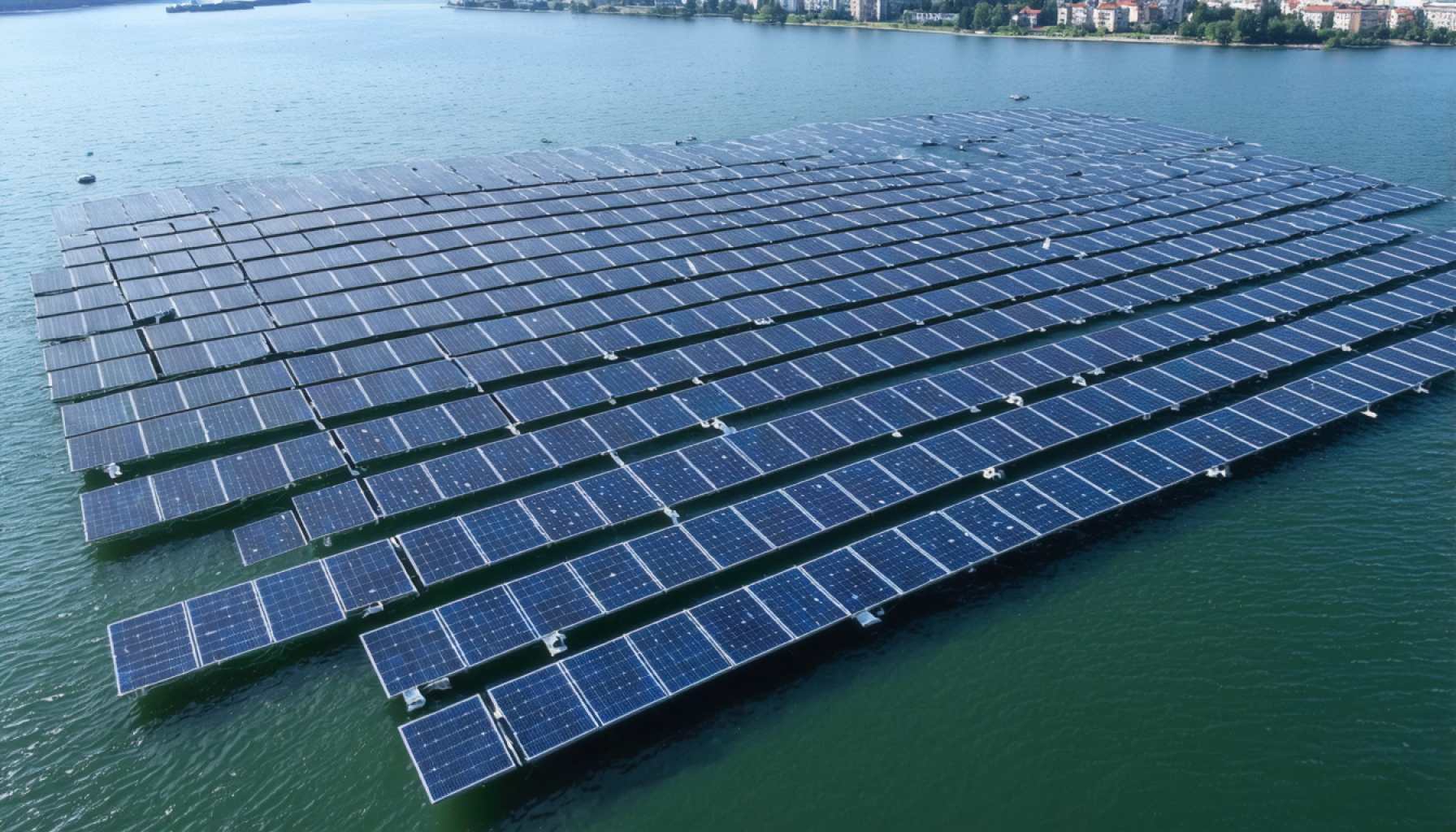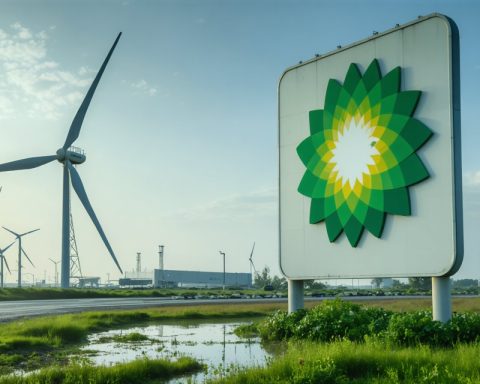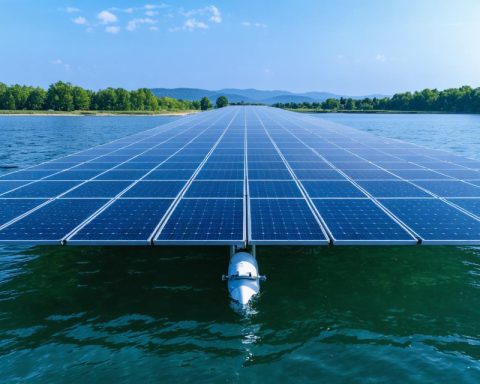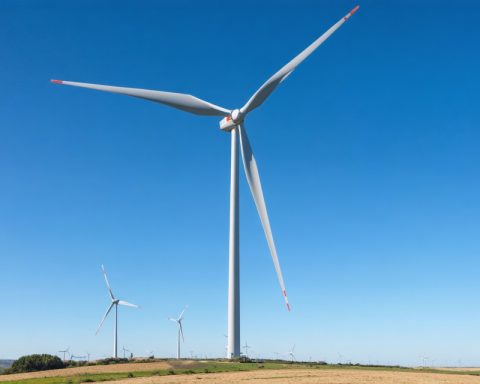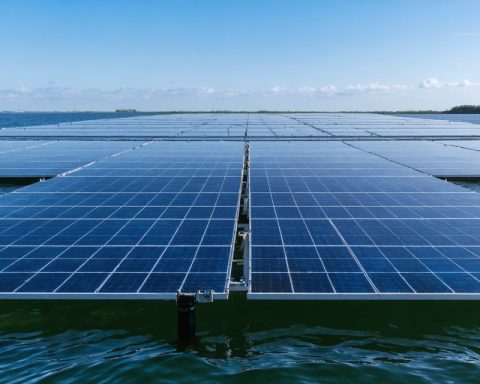- Floating solar farms offer innovative, efficient solutions for urban energy needs by utilizing water surfaces instead of limited land space.
- The cooler environment of water bodies enhances solar panel efficiency by up to 15% compared to land-based systems.
- Countries like Japan and Singapore are leading the adoption of floating solar, showcasing its viability on reservoirs and lakes.
- These installations do not negatively impact aquatic ecosystems when managed properly, aligning with environmental sustainability goals.
- Floating solar farms provide a promising avenue for urban planners to advance renewable energy initiatives without compromising land use or ecological health.
Imagine vast arrays of solar panels glistening on serene water bodies, capturing the sun’s energy while leaving terrestrial habitats untouched. This futuristic scene isn’t science fiction; it’s the burgeoning reality of floating solar farms transforming urban landscapes globally.
As cities swell and land becomes a premium commodity, the ingenious solution of deploying solar panels on water bodies offers a compelling option. These floating solar farms, anchored securely on reservoirs, lakes, and other calm water surfaces, harness the sun’s power with impressive efficiency.
Why Water?
Solar power, a cornerstone of clean energy technologies, faces limitations in dense urban areas where space for large installations is scarce. Traditional solar farms often compete with agricultural and residential needs. However, floating solar panels utilize underexplored real estate—water surfaces—where they require no additional land. Think about it: reservoirs and unused water bodies already form significant parts of cities. By converting these spaces into energy hubs, cities can power thousands of homes without displacing other crucial functions.
Efficiency Boost
Floating solar farms do more than just save space. They enhance performance through natural cooling. Water beneath moderates the panels’ temperature, reducing overheating and boosting efficiency by up to 15% compared to land-based counterparts. This cooler environment translates directly into more electricity, making floating solar a smarter choice for energy output.
A Global Initiative
Countries like Japan and Singapore, leaders in space-efficient tech, have rapidly adopted floating solar farms. Singapore’s installation on the Tengeh Reservoir exemplifies this innovation, serving as both a sustainable energy source and a testbed for future technologies. Notably, these projects demonstrate that floating solar arrays do not adversely affect existing aquatic ecosystems, when carefully managed, adding an essential layer of environmental consciousness.
The Urban Energy Wave
What does this mean for the future of clean energy in cities? Floating solar farms present a unique opportunity to rethink energy strategies. By tapping into the potential of our water-covered areas, urban planners and policymakers can significantly advance their renewable energy goals without sacrificing valuable land space or ecosystem integrity.
Takeaway
Floating solar farms represent a confluence of innovation and efficiency, addressing urban challenges with a sustainable solution. As cities seek to grow sustainably, harnessing water for solar energy presents a visionary and achievable path forward. It’s not just about saving environmental space—it’s about making waves in how we perceive energy generation in our cities.
With this technology lighting the way, our urban environments stand poised at the frontier of a brighter, cleaner, and more innovative future. Watch as your city’s reservoirs transition from mere water storage to beacons of renewable energy.
Revolutionizing Renewable Energy: The Future of Floating Solar Farms
The Evolution and Impact of Floating Solar Technology
Floating solar farms represent a transformative leap forward in the renewable energy sector, marrying innovation with practical applications to address urban and environmental challenges. They offer an eco-friendly solution that maximizes space efficiency and energy output, particularly beneficial in urban environments where land is scarce and costly.
How Do Floating Solar Panels Work?
Floating solar farms consist of solar panels mounted on platforms that float on water bodies. These setups are typically anchored to the bottom and connected to the grid via underwater cables. Here’s a step-by-step breakdown of their deployment:
1. Site Selection: Identify suitable water bodies such as reservoirs, lakes, or unused industrial ponds that can support floating platforms without disrupting local ecosystems.
2. Engineering Design: Platforms are designed to withstand local weather conditions, including variations in water level, wind, and wave action.
3. Installation: The floating structure is installed, with panels oriented to maximize sun exposure while minimizing shading from surrounding objects like trees or buildings.
4. Grid Integration: The generated power is transferred to the land grid through underwater cables, where it can be distributed for urban consumption.
Real-World Use Cases
Floating solar farms are gaining traction worldwide, proving their viability in various geographies:
– Japan’s Nara Prefecture: Small inland water bodies now host solar arrays, protecting the panels’ positions against typhoons and leveraging the region’s extensive water network.
– The Netherlands: Polders and man-made bodies of water serve as ideal locations, harnessing the sun’s energy while addressing the country’s spatial limitations.
Market Forecast and Industry Trends
With a rapidly growing urban population and an increasing push for sustainable energy, the floating solar market is set for exponential growth. It is predicted to grow from $1 billion in 2023 to around $4 billion by 2028 (Source: Allied Market Research). This boom is driven by:
– Technological Advancements: Improved panel efficiency and new materials for buoyancy and durability.
– Regulatory Support: Incentives and policies aimed at promoting renewable energy in urban planning.
Pros and Cons of Floating Solar Farms
Pros:
– Space Efficiency: Utilizes existing water bodies, preserving land for agriculture and housing.
– Higher Efficiency: The cooling effect of water increases energy output by up to 15%.
– Reduced Water Evaporation: Panels shade the water, reducing evaporation in arid regions.
Cons:
– High Initial Costs: The technology and deployment can be more expensive compared to traditional solar farms.
– Environmental Concerns: Potential impacts on aquatic life need thorough assessment and management.
Controversies and Limitations
While the concept garners widespread enthusiasm, floating solar projects must navigate environmental, technical, and regulatory challenges. Concerns include the potential alteration of aquatic habitats and the long-term impacts of anchoring systems on lake or reservoir beds. Continuous research and project-specific environmental assessments are crucial for mitigating these issues.
Actionable Recommendations
1. Feasibility Studies: Prior to implementation, conduct thorough feasibility analyses considering environmental, technical, and financial aspects.
2. Community Engagement: Involve local communities and stakeholders early in the planning process to address concerns and integrate local knowledge.
3. Hybrid Systems: Consider combining floating solar with other renewable technologies, such as hydropower, to create synergistic green energy solutions.
The future of clean urban energy lies in innovative approaches like floating solar farms. By embracing this technology, cities can not only preserve terrestrial ecosystems but also significantly boost their sustainable energy output.
Quick Tip
If you’re planning to invest or participate in floating solar enterprises, monitor developments in regulatory guidelines and advancements in panel technology to stay ahead in a competitive market.
For more insights on renewable energy and technological innovation, visit IRENA.
